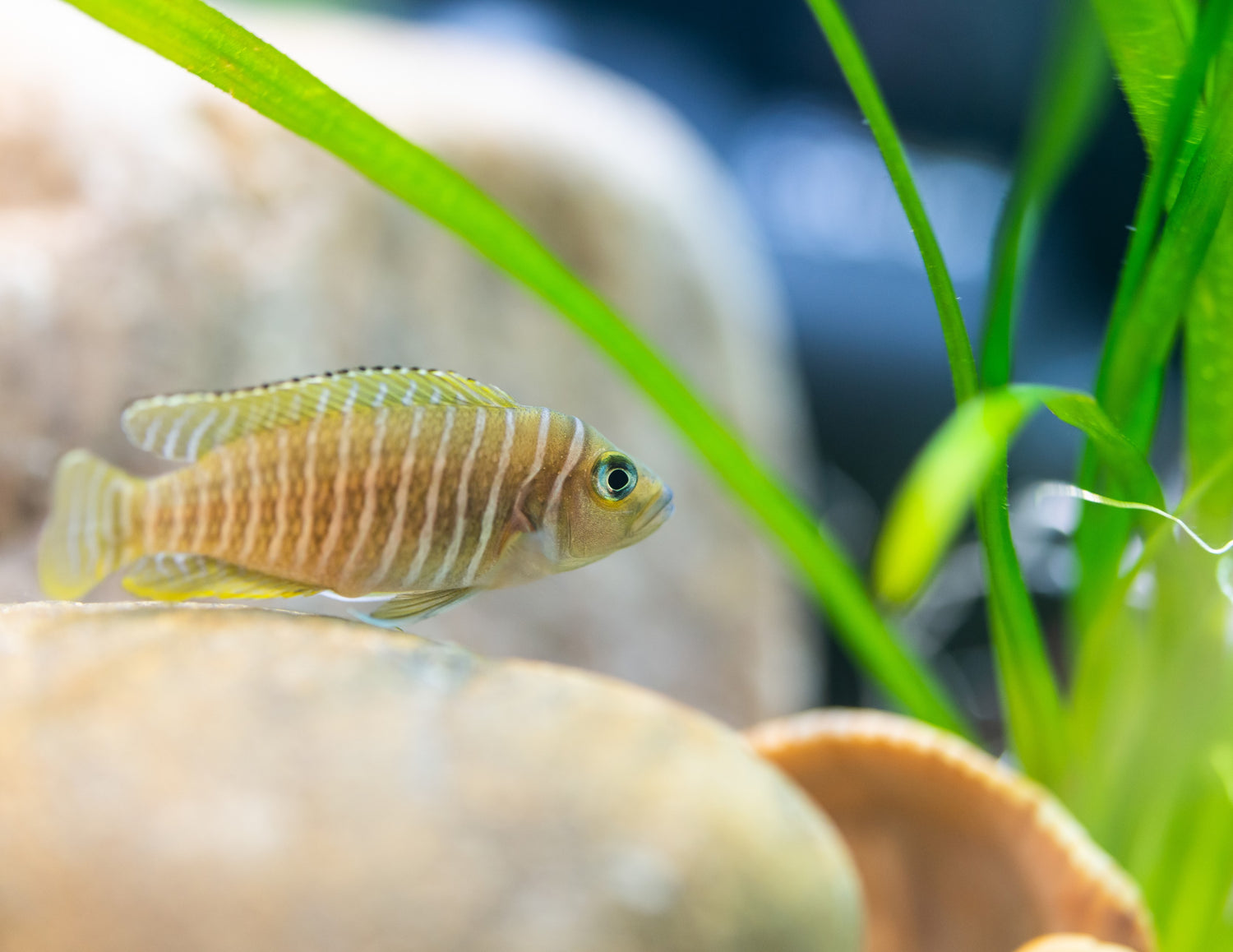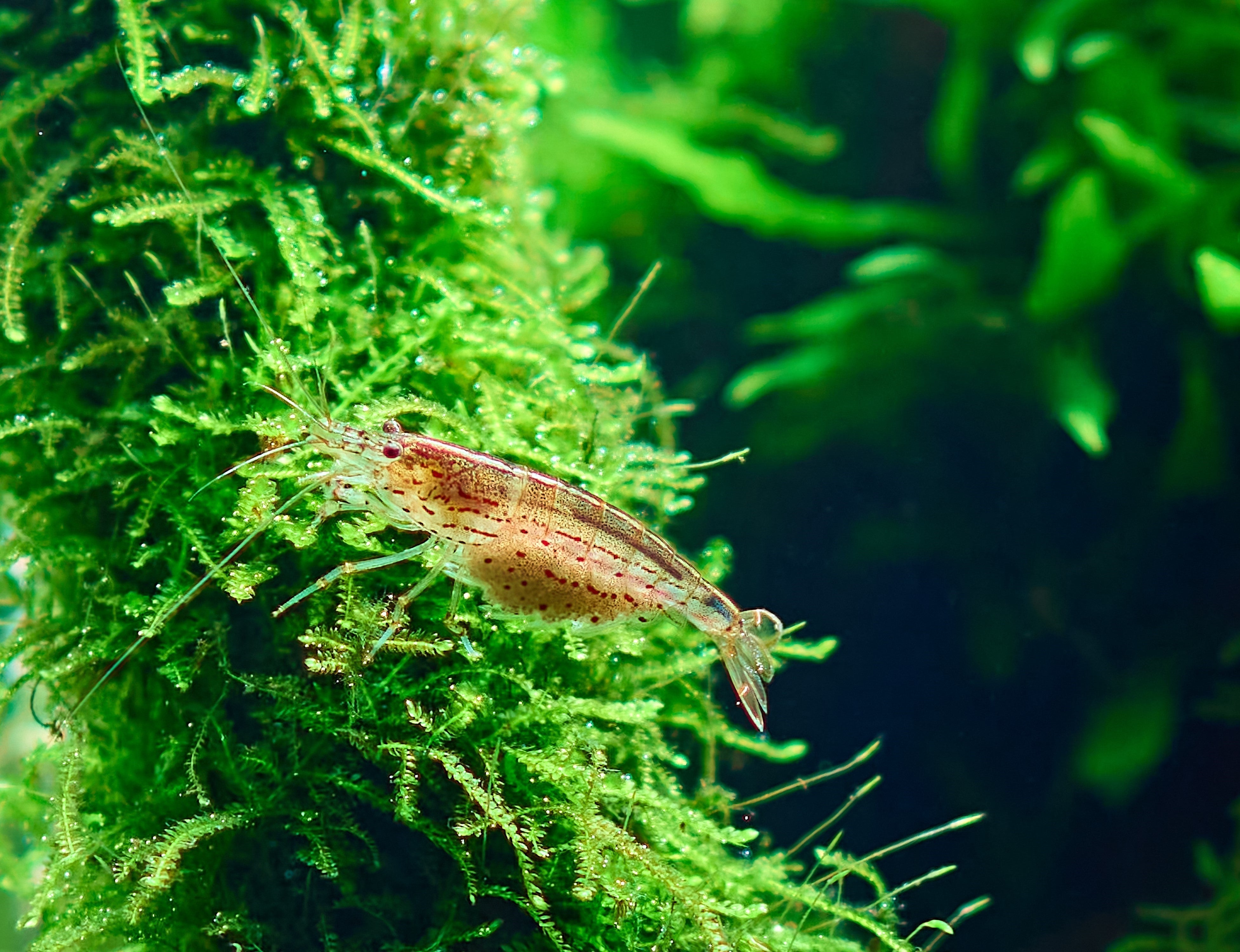Most popular shell dweller
Neolamprologus Multifaciatus or ‘Multis’ for short, are by far the most popular shell dweller in the hobby and possibly the most popular Tanganyikan fish altogether! This comes down to one simple fact: Multis are small, they don’t get larger than 2 inches when fully grown and are the world’s smallest cichlid species. Because of their small size they can be kept in relatively small aquariums! A 10 gallon or 45cm tank will work well for three pairs. Because they only require a 10 gallon fish tank this makes them a viable option for almost every fish keeper. Recently content creators on social media have created a buzz around shell dwellers and have started showing off their own setups. Five years ago, they were not as popular as they are today and honestly, I don’t know why! They are small fish with a big attitude and their setup requirements are like no other fish. Expect to pay around £15.00 per fish at your local fish shop. Another big reason to keep Multis is that the tank setup itself will look vastly different from any other setup you have. For me personally, shell dwellers and Tanganyikan fish in general helped reignite my passion for fishkeeping after years of setting up planted tanks, they provided me with something new to learn about and enjoy. I highly recommend these shell dwellers to beginners as well as experienced hobbyists. There is a very similar shell dwelling species called Neolamprologus Similis, these have the exact same care requirements. Multis and Similis look almost identical but Similis have stripes which extend further onto their head past their gill plate.
Multis Behaviour
Although Multis are the smallest cichlid in the world it is still worth keeping in mind they are still an African cichlid. Multis are feisty and will compete with one another and other smaller fish for food and territory. Originating from Lake Tanganyika, these tiny fish hide in shells whenever they feel threatened. Larger species such as Frontosa are also native to Lake Tanganyika and would quickly make a meal out of a stray Multi if they got the chance. Their shell dwelling behaviour is fascinating, they will spend most of their time swimming above and around the shells and will quickly dart in whenever they feel scared. Approach them slowly if you want to get a closer look! Because of this behaviour it is best to place their tank in a relatively calm area without lots of foot traffic which may cause undue stress. Once you add them to their cycled home get ready for action. They will quickly assert dominance, start claiming shells and start to rearrange their environment. Shell dwellers will move the sand around as they please, usually creating a hilly landscape. Multis are colony breeders so they generally will not eat fry.
Adult Size
Male Multis grow slightly larger than females. Males can reach a maximum length of 2 inches. Keep in mind that other species of shell dweller will grow larger than multis and can be even more territorial.
Tank Setup
A 10 gallon tank is a great size to start keeping Multis, add a good layer of sand and fill the base of the aquarium with shells. I have found escargot shells work well! I recommend starting with 6 - 10 Multis to give yourself a good chance of ending up with a few pairs. A tank of this size will give them plenty of space to swim and form territories. As they breed you will eventually need to thin out the heard, there is normally a high demand for these fish, and they can fetch a decent price too. If you want to keep tankmates with your multis then aim for a tank of at least 30 gallons or larger.
Breeding Shell Dwellers
Breeding shell dwellers is easy, if you have setup a healthy and established environment and are feeding them enough, they will breed. It won’t be long before you see breeding behaviour, this can occur within the first few weeks of adding your new fish. However, this depends how mature your fish are when you get them. Do not be worried if you do not see any fry for the first few months though, the fish may still be maturing and forming territories. Keep your eyes peeled in and around the shells and eventually you will see fry swimming around. Make sure you increase the amount you feed inline with the increase in fry numbers. The best aspect of breeding Multis is that they are colony breeders meaning they do not eat fry. So eventually you can end up with a busy aquarium!
Pro Tip: Once your Multis have started breeding make sure you spot feed the fry. Place the food under the water and aim for it to sink toward the fry so that they get enough food.
Feeding
Multis are not picky when it comes to food. A crushed high quality flake or pellet works just fine. You can supplement their feeding with frozen brine shrimp and blood worm. Adults are more confident than fry when it come to dinner time. For best results when feeding make sure to place the food underwater so that it sinks, this will make sure even the shyest fish get a chance to eat.
Tankmates
For the best breeding results, I suggest you keep you shell dwellers in a species only setup. Small fry can easily become snack for other fish. If your tank is 30 gallons or larger you can have tankmates with your Multis, be sure to plan ahead as you will need to create distinct territories. Less territorial rock dwellers such as Julidochromis species can be a good option. Add shells to one side of the tank and leave a few inches of sand and then build up rockwork on the other side. This will create a boundary between your shell dwellers and rock dwellers. Multis will eat shrimp and can bully even larger tankmates such as Bristlenose catfish.
Water Parameters
I recommend trying to mimic the natural parameters as best as you can. Lake Tanganyikan has hard water (10 degrees GH and above) with a pH between 7.5-8.5. Usual tropical fish temperatures of around 25 degrees Celsius will be fine for Multis. Aim to keep the pH and general hardness stable, a high carbonate hardness (KH) will help ensure you do not experience any swings. Adding aragonite sand can help increase your pH, KH and GH, and will also keep your parameters more stable.
AQUAnatur
I hope this article has helped you understand how to care for Multis. Good luck with setting up your first shell dweller tank. I have had experience keeping some hardy plants such as Anubias and Vallisneria with Multis, just be prepared to replant them from time to time. These fish look incredible when kept in a rimless aquarium with high quality lighting. AQUAnatur supply a range of high quality aquascape products. If you have any questions, please let us know. Our friendly expert team are happy to help!
By Alasdair McPhail




Leave a comment
All comments are moderated before being published.
This site is protected by hCaptcha and the hCaptcha Privacy Policy and Terms of Service apply.